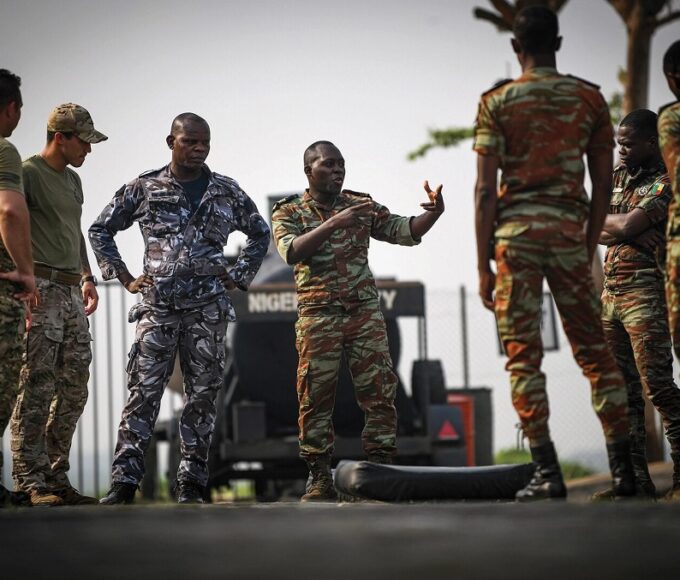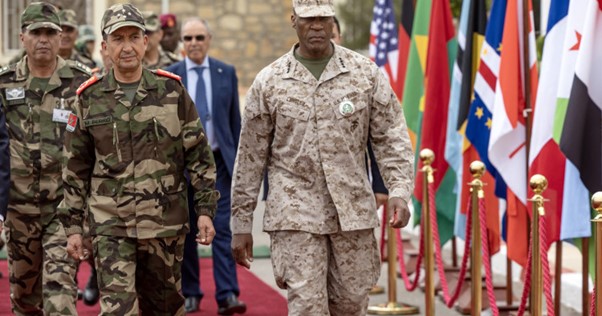The Red Sea Corridor: International Naval Presence and African Sovereignty

Few maritime spaces in the world today are as contested, congested, and consequential as the Red Sea corridor. This vital waterway, stretching from the Suez Canal in Egypt to the Bab el-Mandeb Strait off Djibouti and Yemen, is the lifeblood of global trade and a fulcrum of geopolitical tension. Yet, behind the steel hulls of the world’s most advanced warships now patrolling its waters lies a deeper question for Africa: what does growing international naval presence in its maritime backyard mean for national and continental sovereignty?
From commercial chokepoint to military hotspot, the Red Sea has transformed into a strategic arena where great power rivalry, asymmetric threats, and fragile African statehood intersect. This article explores the evolving dynamics of foreign naval operations in the Red Sea and the sovereignty dilemmas they pose for African nations.
A Corridor of Global Significance
Approximately 12% of global trade and nearly 30% of global container traffic pass through the Red Sea annually. The Suez Canal alone handled more than 21,000 vessels in 2023, generating $9.4 billion in revenue for Egypt, according to the Suez Canal Authority. This maritime artery is indispensable to Europe’s energy imports, Asian exports, and the smooth functioning of global supply chains.
However, the Red Sea’s importance is not just economic—it is strategic. It links the Mediterranean to the Indian Ocean, borders conflict-prone regions in the Horn of Africa and the Arabian Peninsula, and lies adjacent to key shipping and energy routes. This makes it an irresistible zone of interest for global powers seeking influence and presence.
A Crowded Sea: International Military Footprint
The naval presence in the Red Sea is at an all-time high. At least nine countries currently maintain a continuous or rotational naval footprint in the region:
- United States: Operates from Camp Lemonnier in Djibouti, home to the Combined Task Force 153 (CTF-153), launched in April 2022 to secure the Red Sea and Bab el-Mandeb Strait.
- China: Established its first overseas military base in Djibouti in 2017, officially supporting anti-piracy missions but also enhancing China’s long-term strategic posture.
- France: Maintains naval assets in Djibouti and supports EU and multilateral missions in the corridor.
- Russia: Signed a 25-year agreement with Sudan in 2020 for a planned naval base at Port Sudan—though implementation remains stalled.
- Saudi Arabia & UAE: Regularly patrol the Red Sea and have increased their naval infrastructure on islands and ports in Sudan, Eritrea, and Yemen.
- European Union (EU): Through Operation Atalanta, originally launched in 2008, continues to contribute naval vessels, now focusing on broader maritime security including the Red Sea.
The multinational presence is nominally framed around protecting shipping from piracy, terrorism, arms smuggling, and, more recently, Houthi missile and drone attacks on commercial vessels—a threat that surged sharply in late 2023 amid the Israel-Gaza conflict.
Africa’s Role: Gatekeeper or Bystander?
Despite being home to nearly half the Red Sea’s coastline, African states remain underrepresented in shaping the region’s maritime security agenda. Countries like Djibouti, Sudan, Eritrea, Egypt, and Somalia host foreign military facilities or permit access to their ports, but the terms of these arrangements often lack transparency and raise concerns about long-term sovereignty.
Djibouti, for instance, currently hosts at least six foreign military facilities—from the U.S., China, France, Japan, Italy, and Saudi Arabia. While this has brought significant lease revenues (estimated at over $125 million annually), critics argue that Djibouti’s national security and airspace have become effectively outsourced to competing foreign powers.
Meanwhile, African regional organisations such as the Intergovernmental Authority on Development (IGAD) and the African Union (AU) have struggled to assert a coherent maritime governance framework for the Red Sea corridor. The AU’s 2050 Africa’s Integrated Maritime Strategy (AIMS) outlines a vision for “African-owned maritime domain,” but implementation remains patchy.
The Sovereignty Dilemma
Foreign naval deployments often operate under bilateral agreements, UN Security Council mandates, or multilateral task forces. However, African states rarely have full control over operations conducted from their soil or waters. This raises critical sovereignty concerns:
- Jurisdictional Ambiguity: Foreign militaries sometimes bypass local law enforcement or customs, complicating legal oversight and civilian-military accountability.
- Security Externalisation: Overreliance on external forces for maritime security risks weakening indigenous naval capacity and strategic autonomy.
- Geopolitical Spillover: The involvement of rival powers—such as the U.S. and China, or Gulf states with competing Red Sea interests—can draw African host nations into broader geopolitical conflicts.
Sudan’s ongoing civil war (since April 2023) illustrates this risk. Reports suggest covert arms shipments and clandestine support via Red Sea ports for warring factions, facilitated in part by ambiguous naval presences and weak maritime monitoring.
Africa’s Growing Naval Aspirations
To counterbalance these vulnerabilities, some African countries are stepping up their naval capabilities:
- Egypt has made major naval acquisitions, including FREMM frigates from Italy and Germany, and opened the Bernice Naval Base on the Red Sea in 2020—its largest such facility.
- Eritrea is upgrading its port infrastructure, reportedly with Gulf backing, although details remain opaque.
- Kenya and Djibouti are modernising their coast guards and collaborating on regional maritime security exercises.
- In 2023, the African Union launched its pilot Maritime Domain Awareness (MDA) Centre in Kenya, a hub aimed at integrating data from African coastal states to monitor illegal activity in territorial waters.
The Way Forward: From Observation to Ownership
Maritime security in the Red Sea corridor cannot be sustainably outsourced. While international cooperation remains vital—especially against asymmetric threats like piracy and terrorism—African nations must be the principal actors in shaping and defending their maritime domain.
A multipronged strategy is required:
- Strengthen Regional Naval Coalitions: IGAD and the East African Standby Force (EASF) must be empowered to develop maritime security components.
- Negotiate Transparent Base Agreements: Host countries should demand clear clauses on access, use, oversight, and exit strategies in military basing agreements.
- Invest in Maritime Infrastructure and Blue Economy: Enhanced port security, naval training schools, and shipbuilding industries must be localised and funded.
- Leverage AU Mechanisms: The AU’s Peace and Security Council should activate its Maritime Security Committee and link with external actors through well-defined protocols.
Conclusion
The Red Sea corridor stands at the intersection of opportunity and risk. It offers African nations a critical gateway to global trade and strategic leverage in international diplomacy. Yet, without a deliberate strategy of ownership, the corridor could become a maritime periphery governed more by external powers than by the countries it borders.
As the number of foreign flags flying in the Red Sea continues to rise, the challenge for Africa is not to resist cooperation—but to redefine it. Partnership must not come at the cost of sovereignty, and security must be built from the coastline inward, not just enforced from the sea outward.
The future of African sovereignty in the Red Sea will depend not only on who sails these waters—but on who commands the tide.
Key Figures at a Glance (2024):
- $9.4 billion in Suez Canal revenues (Egypt, 2023)
- Over 21,000 ships transited the canal in 2023
- Six foreign military bases hosted in Djibouti
- 12% of global trade flows through the Red Sea
- AU Maritime Domain Awareness Centre launched in Kenya (2023)
Recent Posts
Categories
- Air & Aerospace16
- Border Security15
- Civil Security4
- Civil Wars4
- Crisis5
- Cyber Security8
- Defense18
- Diplomacy19
- Entrepreneurship1
- Events5
- Global Security Watch6
- Industry8
- Land & Army8
- Leadership & Training5
- Military Aviation5
- Military History27
- Military Speeches1
- More1
- Naval & Maritime9
- Resources2
- Security12
- Special Forces1
- Systems And Technology9
- Tech6
- Uncategorized3
- UNSC1
- Veterans6
- Women in Defence9
Related Articles
GLOBAL SECURITY WATCH – LESSONS FROM NATO FOR AFRICAN REGIONAL DEFENCE COOPERATION
Formed in 1949, the North Atlantic Treaty Organization (NATO) remains the world’s...
ByKing Richard Igimoh, Group Editor ALONovember 4, 2025The BRICS Military Influence: New Alignments, New Threats?
Once seen primarily as an economic bloc with aspirations of reshaping global...
Byadmag_adminJune 27, 2025Africa and NATO: Evolving Strategic Partnerships and Interests
In the aftermath of the Cold War, the global security architecture shifted...
Byadmag_adminJune 27, 2025Cyberwarfare in the Global South: Lessons for Africa from Abroad
In today’s digitised battlefield, firewalls are as critical as frontlines, and cyberweapons...
Byadmag_adminJune 26, 2025












